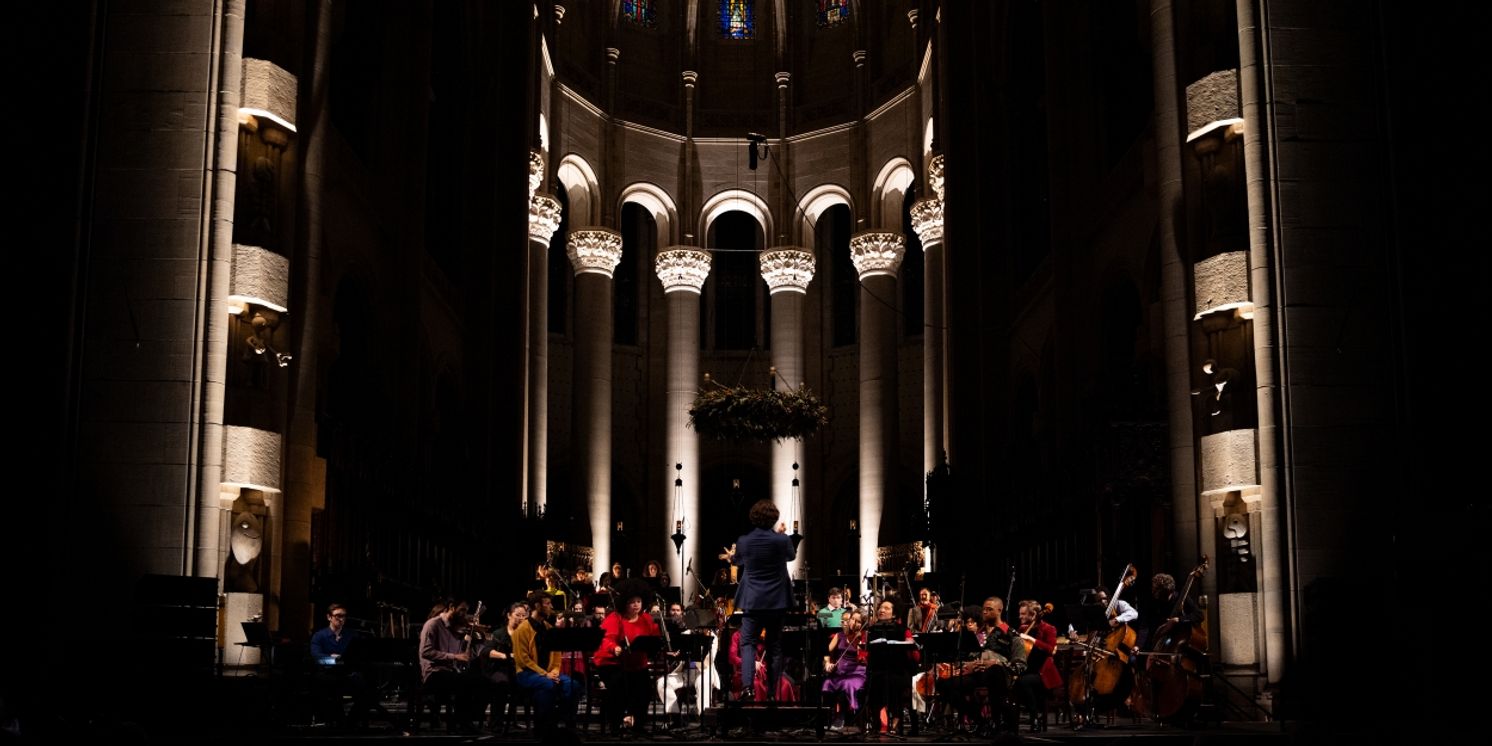Review: Bullock, Tines, Costanzo, White Thrill under Conductor Reif in Chamber Version of Adams's EL NINO
Getting Ready for Christmas in New York with Part Biblical, Part Latin American Text at St. John the Divine Cathedral

While the Met prepares for the company’s premiere of the full-length version of John Adams’s opera-oratorio, EL NINO, in the spring—in a new, completely staged version—the American Modern Opera Company (AMOC) continues showcasing a chamber version of the somber work, EL NINO: NATIVITY RECONSIDERED.
It goes between English and Spanish (featuring the words of poet Rosario Castellanos prominently), and beckons back to Handel’s MESSIAH somewhat in content without calling out to it musically. In fact, it is difficult not to draw parallels to the tragedies that are unfolding around the world at the moment as the oratorio draws to its conclusion.
In a single concert performance at the Cathedral of St. John the Divine in upper Manhattan a few days ago, it headlined two of the singers who will be making their Met debuts in the full work: the divine soprano Julia Bullock and spectacular baritone Davone Tines, along with their wonderful colleagues, countertenor Anthony Roth Costanzo and contralto Jasmin White, plus the terrific members of the AMOC orchestra and choir from Trinity of Wall Street.
Under conductor Christian Reif, who also did the musical arrangement of this version (which Bullock culled from the libretto fashioned by original director Peter Sellars), and director Zack Winocur, it was exciting to hear in the dramatic setting of the cathedral, where it was also done a year ago. Whether singing alone or in various combinations, the singers were outstanding—no small feat in a space as huge as St. John’s--in bringing out the nuances of Adams's score. (They clearly were helped by the lighting and sound design of Christopher Gilmore and Rich Jacobsohn, respectively.)
While, yes, it is an ensemble piece with much solo work, I found baritone Tines a standout, showing how much Met audiences have missed without him in roles he has sung elsewhere. He is such a charismatic singer, not only vocally but with a stage presence to match, that he has blown me away every time I’ve heard him. In the “Shake the Heavens” segment, it was as if lightening struck the stage when he sang. Even when the four soloists sang in unison in “When Herod Heard,” for me at least, it was hard for Tines not to dominate.
Of course, Bullock is no slouch herself, whether modulating her voice so luxuriously in her solo pieces (The Magnificat) or in beautifully blended work with the sometimes soothing, often forceful contralto White, from their first appearance in “The Annunciation” segment that starts the performance. She was stunning in her greatest showcase, “Memoria de Tlatelolco.” Her voice often sounds so mezzo-ish at times that it’s easy to wonder whether that’s her natural range, but her upper register is comfortable, never seeming forced. It’s become common for many mezzos to prefer not to be labeled as such, to broaden their repertoire as performers, but Bullock needs no excuses to be called a soprano.
Contralto White was a gorgeous soloist and collaborator, for example, in the fourth segment, “For My God was Born to Suffer,” which called on the full range of her skills as she sang with the chorus. Along with Bullock and Tines in “And the Star Went Before Them,” they took on a bell-like sound.
At the start, I wondered whether Costanzo’s presence, as part of AMOC’s core ensemble, was simply luxury casting, since he seemed to have little to do, but then he was all three of “The Three Wise Kings”—Gaspar, Melchior and Balthazar—and narrator in the “And He Hath Slew All the Children” segment. Though it didn’t give him the greatest showcase of the piece, his contributions were perfect.
Just a little past three quarters of the way through, the character of the text turns to a modern idiom, with talk of cinema and television, questioning whether violence calls for violence and, though it helps in drawing parallels to our times, it felt a little heavy in getting the message across.
Nonetheless, with a running time of around an hour, it made me thirst for the full version that New Yorkers will hear in the spring at the Met. But other music-lovers will have to wait till this time next year, to see if the company does another tour of the piece. See AMOC’s website (https://www.runningamoc.org/) for more information on its activities and performances.
Photo: Maria Baranova
Reader Reviews
Videos

